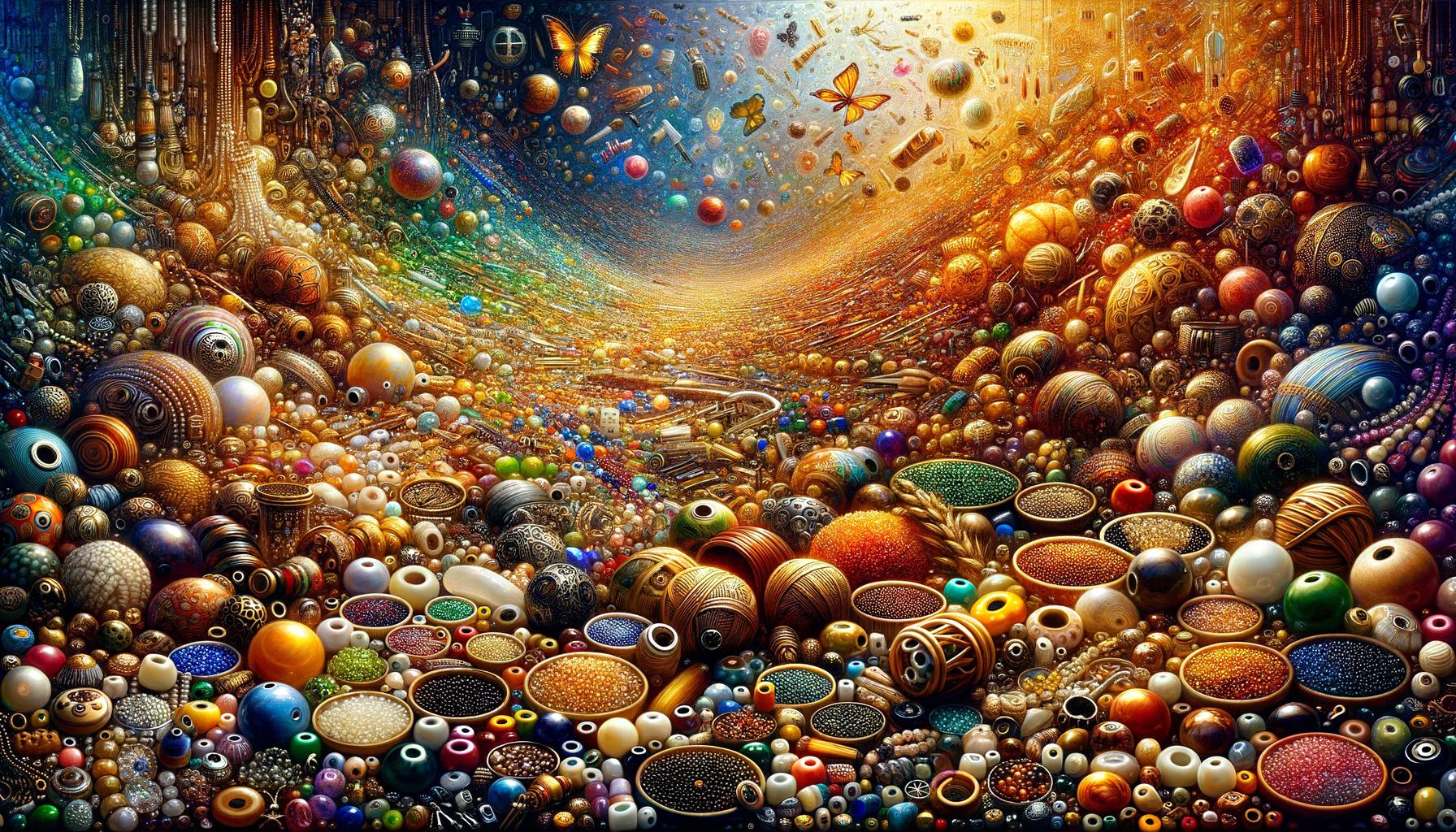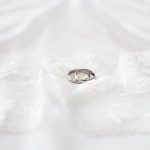In the captivating world of jewelry design, beads occupy a central and irreplaceable role. For thousands of years, these small treasures have been used to create stunning adornments that transcend cultures and eras.
Exploring different types of beads for jewelry making reveals not only their aesthetic allure but also their versatility in creating unique, personalized pieces. From glass and gemstones to metal, wood, acrylic, ceramic, and specialty beads, each type presents its own set of attributes that can transform a simple string into an extraordinary accessory.
Beads have been cherished throughout history, with their use dating back to ancient civilizations such as the Egyptians and Mesopotamians who crafted intricate beadwork from materials like lapis lazuli and carnelian. Across various cultures-whether it’s Native American tribes or African artisans-beads have carried significant symbolism and served as markers of identity, status, and artistry. This rich heritage underscores the diverse possibilities that beads bring to contemporary jewelry making.
Selecting the right bead is crucial for any project. The choice affects not just the visual appeal but also the durability and overall feel of the piece.
Whether you’re opting for shimmering glass beads to add sparkle or earthy wood beads for a natural touch, understanding how each type contributes to your design vision is vital. The right combination can capture light in mesmerizing ways or provide texture that intrigues the senses-setting your creations apart in a world flooded with mass-produced items.
Glass Beads
Seed beads are small, uniformly shaped beads that come in a multitude of colors and finishes. They are widely used in bead weaving techniques such as loom work or off-loom stitches like peyote and brick stitch.
Notable brands like Miyuki and Toho produce high-quality seed beads prized for their consistency in size and shape, which is crucial for intricate patterns and designs. Projects featuring seed beads often include elaborate necklaces, bracelets, and even bead-embroidered pieces that capture attention through detailed craftsmanship.
Lampwork beads, on the other hand, are individually created by artisans who use glass rods melted over a flame to shape each bead by hand. These unique pieces often feature intricate designs or vibrant mixes of colors enclosed within clear or colored glass.
Lampwork beads add a distinctive touch to jewelry items such as pendants and focal points on bracelets because no two lampwork beads are exactly alike; their handcrafted nature imbues each piece with a sense of individuality and artistry.
Czech glass beads occupy yet another exciting niche in the realm of glass jewelry components. Known for their stunning array of shapes-ranging from rounds and faceted fire-polished to dainty pressed leaves-they provide both variety and visual interest. Bead stringing projects benefit greatly from Czech glass due to these diverse forms when creating cascading strands or layering multiple textures. Additionally, they are surprisingly affordable, making them an excellent choice for crafters desiring quality without breaking the bank.
In summary:
- Seed Beads: Ideal for bead weaving techniques like loom work or peyote stitch.
- Lampwork Beads: Handcrafted uniqueness perfect for focal points.
- Czech Glass Beads: Diverse shapes suitable for layered stringing projects.
Utilizing these various types of glass beads offers endless creative avenues for those passionate about designing distinctive jewelry pieces bound to make a statement.
Gemstone Beads
The Allure of Natural Gemstones
Gemstone beads are revered for their natural beauty and intrinsic elegance, making them a timeless choice for jewelry makers. These beads come in a myriad of types, each offering its unique charm and energy.
Commonly used gemstones include amethyst, renowned for its calming lavender hues; turquoise, adored for its vibrant blue-green tones; and agate, prized for its banded patterns and variety of colors. Using gemstone beads can instantly elevate the aesthetic value of any jewelry piece by adding natural sophistication and intriguing character.
Adding Value and Uniqueness Through Gemstone Beads
Incorporating gemstone beads into your designs does more than just beautify-these pieces often carry sentimental or symbolic meanings that add depth to your creations. For instance, rose quartz is said to symbolize love and peace, while lapis lazuli is believed to enhance creativity and wisdom.
The distinct color variations and inclusions in gemstones make each bead unique, ensuring that no two pieces are exactly the same. This inherent uniqueness adds significant value both emotionally and economically to your jewelry projects.
Sourcing and Working With Quality Gemstone Beads
When sourcing gemstone beads, it’s crucial to pay attention to quality indicators such as color saturation, clarity, cut, and origin. Reputable suppliers will provide information on these aspects to help you make informed decisions. Handling these precious materials requires care; using soft beading wire or thread specifically designed for fragile stone can prevent unwanted chips or cracks during assembly. Additionally, adopting techniques such as knotting between each bead can safeguard against damage should the strand ever break.
Exploring different types of beads for jewelry making becomes especially rewarding when working with gemstones due to their versatility and depth. Whether you’re aiming for understated elegance with simple designs or bold statements through elaborate arrangements, gemstone beads offer endless possibilities that inspire creativity while grounding your work in natural beauty anda rich history.
Metal Beads
Exploring different types of beads for jewelry making reveals a dazzling array of options, and among the most striking are metal beads. These beads come in various materials including sterling silver, gold-filled, brass, and even more exotic metals like titanium or copper.
Each type offers its own distinct aesthetic and structural qualities that can profoundly influence the design and finish of your jewelry pieces. Metal beads can act as focal points, spacers, or accents within a piece, adding both shine and durability.
Types of Metal Beads
Sterling silver beads are highly prized for their classic luster and hypoallergenic properties. They often feature intricate designs, filigree work, or smooth finishes that create a sophisticated look suitable for high-end jewelry items. Gold-filled beads offer the luxury appearance of solid gold but at a fraction of the cost, making them ideal for budget-conscious designers who don’t want to compromise on beauty.
Brass beads bring warmth with their golden-yellow hue and can lend an antique feel to your projects. Lastly, copper beads stand out because of their unique reddish-brown color which beautifully suits rustic or bohemian designs.
Impact on Jewelry Aesthetics
The inclusion of metal beads in a piece can dramatically elevate its visual appeal by adding brightness and contrast against other materials like gemstones or wood beads. For instance, pairing shiny sterling silver with opaque gemstone beads creates a stunning juxtaposition that highlights the characteristics of each material.
Metal beads also provide weight to pieces such as necklaces or bracelets, giving them a tactile sense of quality that is both felt by the wearer and seen through the meticulous craftsmanship involved.
Care and Maintenance
To maintain the sheen and longevity of metal beads in your jewelry collections, proper care is essential. Sterling silver should be polished regularly with a soft cloth to avoid tarnishing while storing it in anti-tarnish bags can extend its life between cleanings.
Gold-filled and brass beads can also tarnish over time; however, using mild soap solutions followed by thorough drying helps retain their shine without damaging their surface integrity. Lastly, always avoid exposing metal beads to harsh chemicals found in household cleaners or cosmetics to ensure they remain radiant additions to any jewelry design.
By exploring different types of metal beads for jewelry making you open up endless possibilities for creating structured yet dazzling pieces that speak volumes through their shimmering presence.
Wood Beads
Incorporating wood beads into your creations allows you to experiment with different styles reflecting earthy and boho vibes. For instance, you might combine rustic wooden beads with leather cords for a timeless bracelet perfect for casual wear.
Alternatively, interspersing small gemstone or metal accent beads among larger wooden ones creates intricate patterns that appeal to a broader audience. By exploring different types of beads for jewelry making, especially those made from wood, you can add layers of visual interest and texture to your pieces without overwhelming the design.
Customizing and finishing wood beads can further enhance your jewelry projects. Techniques such as painting or staining can transform natural wooden beads into eye-catching focal points or complementary accents within your designs.
Applying a clear sealant ensures durability while preserving the bead’s beauty against exposure to moisture and wear over time. Additionally, experimenting with burning patterns into the surface or adding personal engravings involves exploring different types of beads for jewelry making in unique ways that express individuality and craftsmanship.
| Type of Wood Bead | Characteristics |
|---|---|
| Sandalwood | Aromatic fragrance; commonly used in spiritual jewelry |
| Ebony Wood | Deep black color; sophisticated appearance |
| Bamboo Beads | Eco-friendly; available in various vibrant colors |
Acrylic and Plastic Beads
When exploring different types of beads for jewelry making, it’s important to weigh the pros and cons of acrylic and plastic options. On the positive side, these beads are generally lighter than metal or glass alternatives, making them ideal for creating comfortable-to-wear pieces such as large statement necklaces or earrings that won’t cause undue strain.
They are also highly durable and resistant to shattering, which makes them perfect for more active wearers or children’s jewelry. Furthermore, acrylic and plastic beads can be produced in almost any color, shape, or size imaginable, offering endless design possibilities.
However, there are some drawbacks to consider. Acrylic and plastic beads may not have the same luxurious feel as natural gemstones or precious metals. Additionally, they can sometimes look less polished due to seams from molding processes being visible on some lower-quality examples. To get the best results when using these materials, it’s vital to select high-quality acrylics that offer smooth finishes and clear details.
For various projects where weight is a significant concern-such as long necklaces or voluminous bead curtains-acrylic and plastic beads truly shine. They’re also suitable for playful designs aimed at younger audiences thanks to their wide variety of cheerful colors and whimsical shapes.
| Bead Type | Key Characteristics |
|---|---|
| Lucite Beads | Clear and colorful; mimics glass |
| Resin Beads | Unique embedded designs; lightweight |
| Acrylic Beads | Wide variety; affordable; versatile |
By judiciously incorporating these lightweight options into your craftsmanship repertoire, you can craft striking yet comfortable pieces that cater to a broad audience.
Ceramic and Porcelain Beads
One of the most compelling aspects of ceramic and porcelain beads is their range of colors, finishes, and textures. Artisans can incorporate various glazing techniques to produce a myriad of visual effects-from glossy, glass-like surfaces to matte, earthy appearances. Some ceramic beads may even include hand-painted motifs or patterns that reflect cultural heritage or personal stories. Because they can be shaped into virtually any form, these beads offer endless creative possibilities for jewelry designers.
However, working with ceramic and porcelain beads does come with its own set of considerations. Despite their durability, these beads can be prone to chipping or cracking if not handled carefully during assembly. It’s advisable to use nylon-coated wire or soft stringing materials to prevent breakage while ensuring stability in the design. Additionally, sourcing high-quality ceramic beads often involves researching reputable artisans or suppliers who use safe glazing materials free from harmful chemicals.
| Characteristic | Description |
|---|---|
| Artisanal Quality | Handcrafted designs providing unique appeal. |
| Range of Finishes | Glossy, matte, glazed surfaces available. |
| Material Consideration | Durable but prone to chipping; requires careful handling. |
For those exploring different types of beads for jewelry making, ceramic and porcelain options bring artistic elements that are unparalleled by other materials. They are perfect for statement pieces or projects where you want each bead to tell part of a story visually. Whether used sparingly as focal points or abundantly throughout a design, ceramic and porcelain beads always manage to captivate attention through their sheer beauty and craftsmanship.
Seed Beads
Seed beads, though small in size, are powerhouses of versatility and creativity in the world of beadwork. These tiny beads come in a myriad of colors, finishes, and sizes, making them essential components for intricate jewelry designs.
Notable varieties include Miyuki, Toho, and Czech seed beads, each renowned for its high quality and uniformity. Whether you’re a beginner or a seasoned jewelry maker, exploring different types of beads for jewelry making like seed beads can open up an array of design possibilities.
One of the most popular techniques utilizing seed beads is bead weaving. This method allows designers to create elaborate patterns and textures by interlacing threads through the beads in various ways. Common weave techniques include peyote stitch, herringbone stitch, and brick stitch, each offering unique visual effects.
Projects range from simple bracelets to complex tapestries that showcase intricate craftsmanship. Bead embroidery is another avenue where seed beads shine; they add dimension and sparkle to fabric canvases when embroidered onto surfaces for creating stunning wearable art or decorative pieces.
Selecting the right size and type of seed bead for your project is crucial to achieving the desired outcome. Seed beads generally range from size 15/0 (very tiny) to size 6/0 (larger), with sizes such as 11/0 being particularly popular for detailed work. Factors to consider include:
- Uniformity: Ensure that beads are consistent in size and shape.
- Finish: Choose between matte, glossy, metallic, or iridescent finishes depending on your project’s theme.
- Hole Size: Check if the hole is large enough for multiple thread passes.
In summary, incorporating seed beads into your projects can elevate even the simplest designs through their myriad applications and inherent beauty.
Specialty Beads
When it comes to exploring different types of beads for jewelry making, specialty beads offer an exciting array of textures, colors, and forms that can elevate your designs to new heights. These unique treasures often serve as focal points or accent pieces in jewelry, bringing a distinctive flair that’s hard to achieve with conventional beads alone.
Cloisonné Beads: A Touch of Enamel Artistry
Cloisonné beads are renowned for their intricate enamel work and vibrant colors. Originating from ancient China, these beads involve a labor-intensive process where thin wire partitions (cloisons) are created on a metal surface and filled with enamel paste. The result is a glossy and detailed bead that can feature floral motifs, geometric shapes, or even scenes from nature.
These artistic creations can add ornate elegance to your necklaces or bracelets. When pairing cloisonné beads with other materials, consider using simple spacers that allow the complex beauty of these specialty items to shine through.
Druzy Beads: Sparkling Natural Wonders
Druzy beads are another fascinating type of specialty bead featuring tiny quartz crystals growing on the surface of stones like agate or sandstone. These crystalline formations create a glittering effect reminiscent of sugar crystals or stardust frozen in time. Druzy beads come in various natural shades and can be dyed into bold colors for dramatic impact.
They’re perfect for adding an ethereal sparkle to any piece, whether used sparingly as accents or more liberally as central elements in statement earrings or pendants. Subtle gold-filled findings often complement druzy’s natural shimmer perfectly.
Bugle Beads: Sleek Lines and Bold Statements
Lastly, bugle beads offer sleek linearity that contrasts sharply with more rounded bead types. Made primarily from glass but also available in metal variations, bugle beads come in elongated tube shapes ranging from just a few millimeters to several centimeters long.
Their uniform size makes them ideal for creating structured patterns within bead weaving projects such as loomed bracelets or intricate tassels on earrings. Incorporating bugle beads into your work adds linear sophistication and is fantastic for those looking to explore minimalist yet impactful design aesthetics.
By diversifying your jewelry arsenal with these specialty options-be they the elegant cloisonné, shimmering druzy, or structured bugle-the possibilities for creativity are boundless. Embrace these extraordinary materials to craft pieces that truly stand out in uniqueness and artistic expression.
Choosing the Right Beads
When it comes to creating stunning jewelry pieces, selecting the right beads is crucial. One of the first factors to consider is the material of the beads. Different materials bring their own unique aesthetics and qualities to a design.
For instance, glass beads can add a brilliant shimmer and are available in a plethora of colors and styles such as seed beads, lampwork beads, and Czech glass beads. On the other hand, gemstone beads like amethyst or turquoise offer natural beauty and uniqueness that can elevate your piece significantly.
Another key consideration is bead size. The size of the bead must complement both the design and its intended wearer’s preferences. Larger beads often become focal points in statement pieces like chunky necklaces or bold earrings. Smaller beads such as seed beads are perfect for delicate designs including intricate bead weaving projects or detailed embroidery techniques. By carefully planning your bead sizes ahead of time, you can ensure that different elements of your jewelry harmonize well together.
Color coordination also plays a significant role when exploring different types of beads for jewelry making. Color theory can help you create pieces that are either monochromatic for a subtle look, analogous for harmonized beauty, or complementary for high-contrast impact. Additionally, considering finishes like matte, shiny, or iridescent can further enrich the visual texture of your design. Putting thought into these aspects ensures that each bead contributes positively towards achieving the overall aesthetic you’re aiming for.
Here are some practical tips to help with bead selection:
- Consider the weight: Ensure that heavier materials don’t make your jewelry uncomfortable to wear.
- Match your project’s complexity: Simple designs might benefit from focal gemstone beads while complex patterns could use uniform seed beads.
- Test combinations: Mix and match various types before finalizing to visualize how they work together.
Finally, organizing your bead collection efficiently will save you loads of time and improve productivity in your creative process:
- Use clear storage containers so you can quickly identify contents.
- Label compartments by material type or color groupings.
- Keep a catalog: Documenting what you have can prevent unnecessary purchases and ensure variety in future projects.
By paying attention to these critical factors-material choice, size considerations, color coordination-and maintaining an organized collection, you’ll be well on your way to crafting beautiful and cohesive jewelry designs every time.
Conclusion
In conclusion, the world of beads offers a vast array of possibilities for jewelry enthusiasts, allowing for endless creativity and personal expression. Whether you are drawn to the shimmering versatility of glass beads, the natural elegance of gemstone beads, or the earthy vibes of wood beads, each type carries its unique charm and potential. Exploring different types of beads for jewelry making not only enhances your designs but also enriches your understanding and appreciation of this timeless craft.
Experimenting with various bead types can help you find your distinctive style, setting your creations apart in the world of handmade jewelry. The durability and shine of metal beads can add a structural element to your pieces, while the lightweight playfulness of acrylic and plastic beads invites a fun and whimsical approach.
Specialty beads like cloisonné or druzy provide unique textures and colors that can serve as statement features in your designs. No matter which type you choose, incorporating diverse materials into your projects will enable you to create one-of-a-kind jewels that truly resonate with individuality and artistry.
We encourage you to embark on your own journey through this scintillating universe by experimenting with different bead types in your upcoming projects. Your creative endeavors could inspire others, so don’t hesitate to share them within crafting communities or on social media platforms. By exploring different types of beads for jewelry making, you’ll not only broaden your design skills but also contribute to a vibrant tradition that connects artisans across cultures and generations. Happy beading.
Frequently Asked Questions
How Many Types of Beads Are There in Jewelry Making?
There are many different types of beads used in jewelry making, each offering its own unique appearance and attributes. These include seed beads, which are small and uniform, perfect for intricate designs; gemstone beads, valued for their natural beauty and variety; glass beads, which come in an extensive array of colors and shapes; wood beads that provide a rustic feel; and metal beads that add a touch of elegance and sheen.
Each type can drastically alter the final aesthetic of a piece of jewelry, allowing artisans to express diverse styles and themes.
How to Choose Beads for Jewelry Making?
Choosing the right beads for jewelry making involves considering several factors including the intended design, color scheme, texture, and size compatibility with other components. It’s essential to think about how the color of the beads complements or contrasts with other materials in the piece. The quality of the bead material is also crucial as it impacts both aesthetics and durability.
Additionally, knowing whether your design requires a uniform look or varied bead shapes will guide your selection process. Finally, personal preference plays a significant role since the choice of beads should ultimately resonate with your creative vision.
What Are the Different Types of Beadwork?
Beadwork encompasses various techniques that call upon different skills and methods to create stunning pieces of art or jewelry. One popular form is bead weaving where tiny seed beads are stitched together using patterns to form intricate designs. Another form is bead stringing which involves threading larger beads onto wire or cord to create necklaces, bracelets, or anklets.
There’s also loom beading which utilizes a loom to weave beads into fabric-like strips that can be applied in decorative arts or accessories. Each technique opens up endless possibilities for creating unique pieces tailored to individual artistic preferences.

Welcome to my jewelry blog! My name is Sarah and I am the owner of this blog.
I love making jewelry and sharing my creations with others.
So whether you’re someone who loves wearing jewelry yourself or simply enjoys learning about it, be sure to check out my blog for insightful posts on everything related to this exciting topic!





